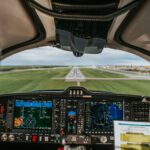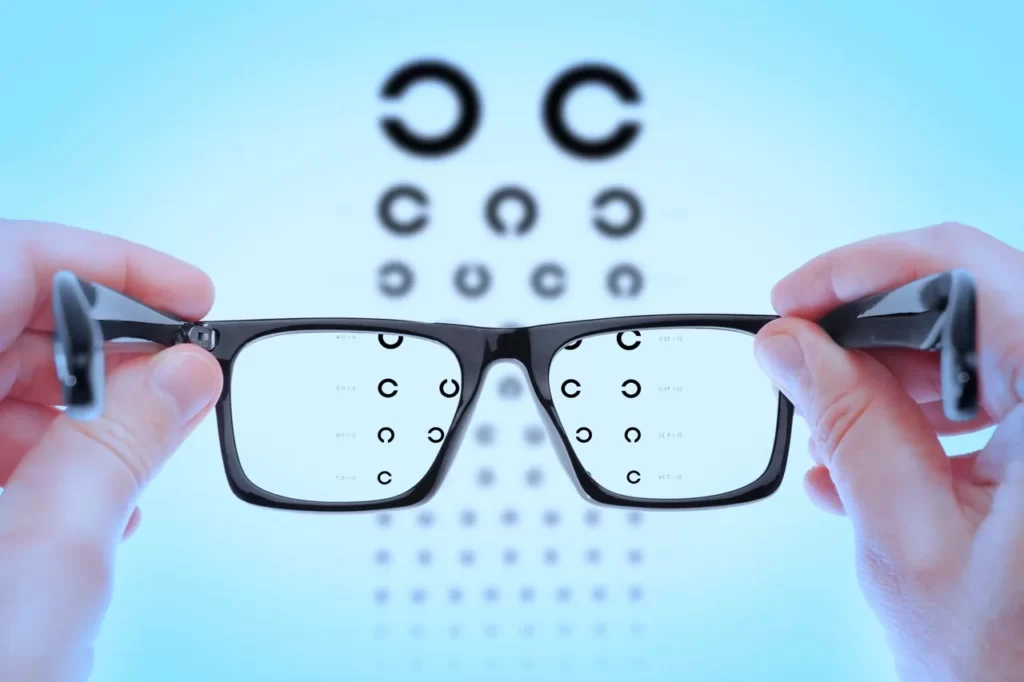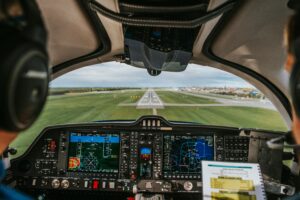If you have always dreamed of becoming a pilot but have been worried that your glasses or contacts might hold you back, fear not! The requirements for pilots are more flexible than you might think, and it is possible to wear glasses or contacts and still become a private pilot or even a commercial airline pilot. Here is what you need to know about vision requirements for pilots and how to achieve the vision necessary for your flying goals.
First, let’s start with the basics. Pilots, both private and commercial, are required to have a medical certificate from a Federal Aviation Administration (FAA)-approved medical examiner in order to fly. This certificate verifies that a pilot is physically and mentally fit to operate an aircraft. One of the key components of this evaluation is a vision test, which determines whether a pilot has adequate visual acuity to safely fly an aircraft.
Requirements for Pilots Who Wear Glasses
So, what are the vision requirements for pilots? The FAA has specific guidelines for vision, both corrected and uncorrected, that must be met in order to obtain a medical certificate. For private pilots, the vision requirements are a bit more relaxed. Private pilots must have at least 20/40 vision in each eye, either with or without glasses or contacts. This means that a private pilot must be able to see at a distance of at least 20 feet what a person with normal vision can see at 40 feet.
Commercial pilots, on the other hand, have more stringent vision requirements. Commercial pilots must have at least 20/20 vision in each eye, either with or without glasses or contacts. This means that a commercial pilot must have “perfect” vision, or the ability to see at 20 feet what a person with normal vision can see at 20 feet. In addition to this visual acuity requirement, commercial pilots must also have normal depth perception, which is the ability to perceive the distance between objects and judge spatial relationships.
But what if you don’t meet these vision requirements? Don’t worry, there are options available for pilots who need glasses or contacts in order to meet the vision standards. For example, if you have a vision impairment that cannot be corrected to 20/20 or 20/40, you may still be eligible for a medical certificate if you wear glasses or contacts that meet certain requirements. The FAA allows pilots to wear glasses or contacts as long as they provide adequate visual acuity and do not distort the wearer’s vision in any way.
There are also certain waivers available for pilots who do not meet the vision requirements due to certain medical conditions, such as a severe refractive error or cataracts. These waivers are granted on a case-by-case basis and are evaluated by the FAA on an individual’s ability to safely fly an aircraft.
Wearing Glasses and Becoming a Pilot: Is it Possible?
So, can you wear glasses and be a pilot? The answer is yes! While the vision requirements for pilots may seem strict at first glance, there are options available for those who need glasses or contacts in order to meet the standards. Whether you are aspiring to be a private pilot or a commercial airline pilot, it is possible to achieve the necessary vision to reach your flying goals.
But keep in mind that the vision requirements for pilots are not the only physical standards that must be met. Pilots, especially those in the military or air force, are required to meet a number of other physical and mental requirements in order to be cleared for flight duty. These requirements can vary depending on the type of aircraft a pilot will be flying and the specific role they will be playing in the cockpit. For example, military pilots may have additional physical and mental requirements beyond those of civilian pilots due to the demanding nature of their job.







